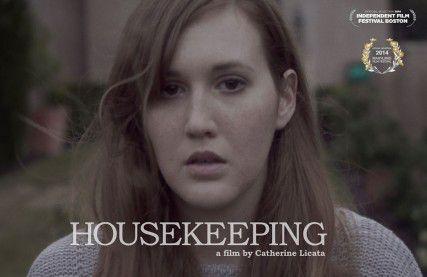
Now that Halloween is over, why not try something truly terrifying, like writing a 50,000-word novel in just one month? National Novel Writing Month is an annual novel writing project in which participants are challenged to complete a 50,000-word (about 175 pages) original novel project in one month. The purpose of the project is to encourage people to write, especially those who have thought about writing a novel but have been daunted by the amount of work. The project encourages professionals and amateurs alike to dedicate one month to writing an entire novel.
History of NaNoWriMo
NaNoWriMo was founded in San Francisco 12 years ago when a few friends began what they called “noveling.” This creative writing project began with only 21 participants in the first year. According to the website, the friends sat around, loaded up on snacks and caffeine and typed away at their computers for hours on end.
“[We] wanted to write novels for the same dumb reasons twenty-somethings start bands,” said founder Chris Baty on the NaNoWriMo website. “Because we wanted to make noise. Because we didn’t have anything better to do. And because we thought that, as novelists, we would have an easier time getting dates than we did as non-novelists.”
NaNoWriMo’s popularity has grown since then – in 2010, over 200,000 participants wrote 2,872,682,209 words.
How to enter NaNoWriMo
To participate, hopeful writers can go to the website, sign up and begin writing. A participant must start from scratch – nothing written before Nov. 1 is allowed in the novel. Participants are considered winners if they have written 50,000 words of fiction by Nov. 30 at midnight, no matter if the story follows any real plot line or has a central idea.
“The whole thing is, it’s an honor system,” said Anna Draves, a volunteer Municipal Liaison for the Boston NaNoWriMo region. “Once you’re done with your novel and you’ve written 50,000 words, you basically copy and paste it into their word count section of the website and then it will send back a response of ‘You made it, congratulations.’ Everybody who crosses the finish line is a winner.”
There is also no deadline to enter, allowing applicants plenty of time to finish.
“I started writing my first NaNoWriMo novel on Nov. 12. I was about 20,000 words behind to start out with but I did finish,” said Travis Kelley, the Municipal Liaison for Boston. “It was crap but I did finish that year.”
Write or Die
The project is about quantity, not quality, as 50,000 words measures out to 1,667 per day. Because of the time limitation, the project forces participants to write without obsessing over the quality of their work.
Many participants encourage the idea of “Write or Die,” which emphasizes the importance of the self-discipline it takes to sit down and write for long periods.
“Part of it’s discipline,” said Kelley. “I can sit down and just start writing. NaNoWriMo is the ultimate rough draft. You get your thoughts out there and you edit them later. I know I have to get 1,667 [words] and I try to write a little more than that each day and it somehow works.”
Why participate?
There are no prizes for completing the novel aside from personal satisfaction and a certificate. By midnight on Nov. 30, participants must upload their novels onto the NaNoWriMo website, where the word count is verified. The writers who have reached the 50,000-word target are emailed a certificate of completion.
“Just knowing how good it feels when you’re done. How accomplished you feel and you get to say that you wrote a novel, you get to tell people ‘I’m a novelist.’ That’s exciting,” said third year participant Andrea Hurwitz, who works at a nursing home when she is not writing for NaNoWriMo.
The task takes time and discipline, veterans said, and more than a few cups of coffee.
Published WriMo’s
NaNoWriMo claims to be a creative process that welcomes and rewards any writer willing to take up the challenge. One novel of the competition, Sarah Gruen’s “Flying Changes,” became a New York Times bestseller.
Gruen also wrote the bestselling novel “Water for Elephants” during NaNoWriMo. Other published NaNo works include “Persistence of Memory” by Amelia Atwater-Rhodes, “Self Storage” by Gayle Brandels, “Take the Reins” by Jessica Burhart and “Running for My Life” by Anna Gonzalez.
Upcoming events
Various groups meet during the month to help and encourage people to continue writing, ensuring that participants don’t have to go through the writing process alone.
One such event took place this past Sunday near Fenway. The writers met for the first time to meet some other hopeful novelists.
“This is a chance for people to get to know each other and make some connections without having to worry about getting a word count in at the same time,” said Kelley.
Writers also establish Write-Ins, where participants meet and write together for hours.
“People bring their various writing instruments, show up at a location, and we all write together. You really tap into a lot of creative energy by doing that,” said Kelley.
After November ends and writers have submitted their work, NaNoWriMo hosts an event appropriately titled “Thank Goodness It’s Over.”
Kelley described the party as an opportunity to decompress.
“It’s a lot of fun. It’s a lot of great people,” said second year participant Brendan Salisbury.
“It’s a lot of fun to hang out with other people who are writing and who you know are going through the exactly the same thing as you, dealing with the same writers block.”





















































































































Brian • Nov 2, 2011 at 12:58 pm
You didn’t include the website in the article, which would be helpful to interested future writers.